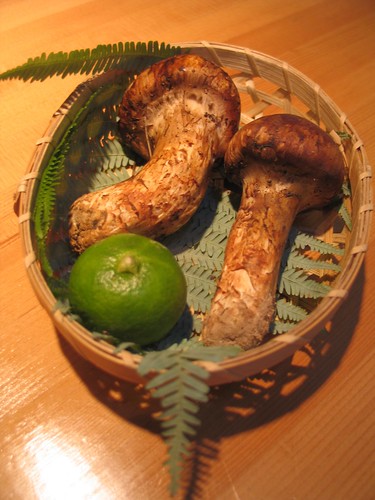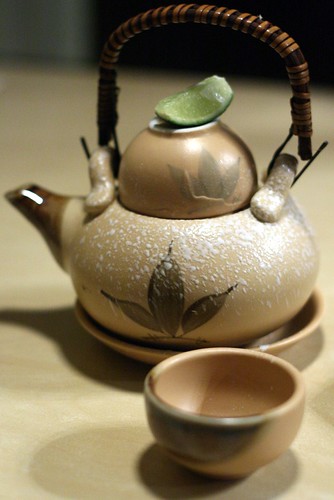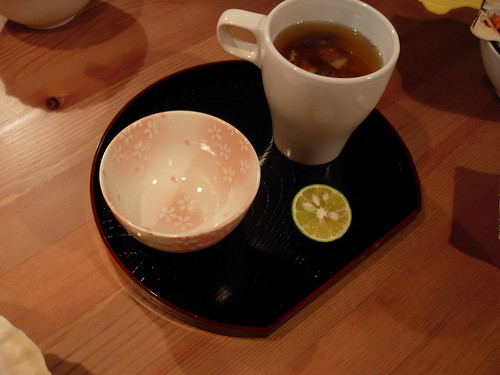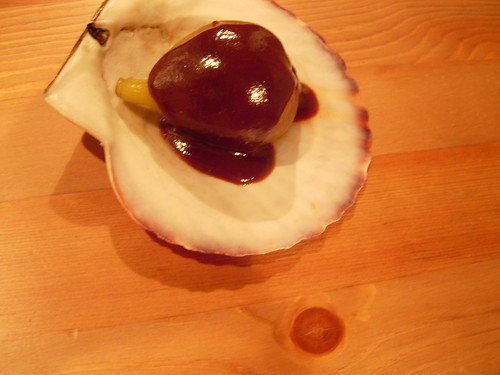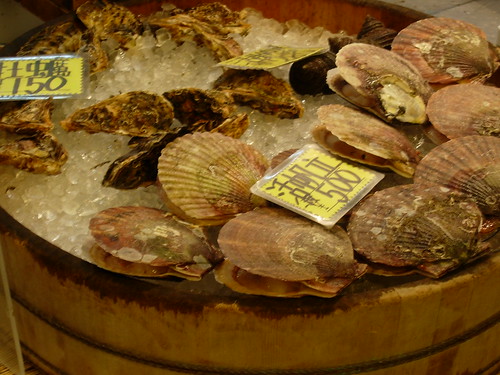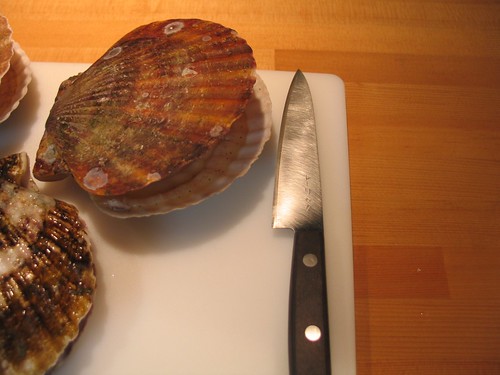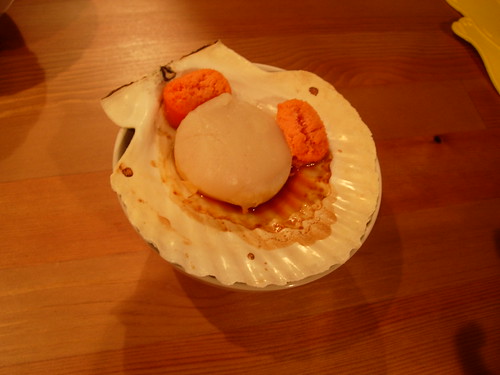After trying a bunch, I have found that I have pretty specific requirements. I used to not care much, but I guess I’m getting old. These days I want the coffee to be decent, though I’m not a nut about this. I want a quiet atmosphere, comfortable chairs, music I like or at least don’t really hate (preferably not with singing in English, which breaks into my concentration), and no great sense of pressure to order something or give up the table. Oddly enough, I have found a great many that meet every requirement except the music: usually you get your pick of J-pop, muzak, various irritating styles of mediocre American pop, or every now and again a place with a huge range that plays it all randomly. But I have also increasingly found that it is the music that makes a place impossible: for example, I found one place that is very nice in most respects, except that they play continuous 1950s American doo-wop sort of stuff, and after an hour I feel like my brain has been blenderized.

So, with some reservations, I decided to check out Ryugetsudo, an old coffee shop founded in 1953 as a sort of temple to European “classical” music.
Rules Of Sound
The first thing you have to know is that this place has definite rules. No talking, no cellphones, no typing, no anything that could disturb people listening. If you buy a pastry at the bakery downstairs, you may eat it, but you must unwrap it in the hallway before you enter the main room. Everything is organized around the music.
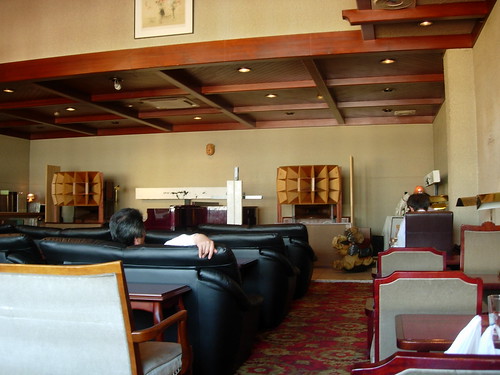
This is also true visually. All the seating is arranged in rows facing a low dais with a piano, above which, to left and right, are large speakers made more attractive by some beautiful wooden things that spread the sound. Along one side are a lot of books and the huge record collection (records, as in vinyl, if you even know what that means any more!), and the books are basically reference works about music: work catalogues of major composers, reference works on opera, and so on.
If you wish, you may sit at a table in the back and pore through the four-volume handwritten catalogue in binders, organized A-Z by composer for three volumes, plus one volume for nothing but Mozart and Beethoven. Having found something you’d like to hear, you write the disc number and the album title (in Japanese katakana transcription) on the next open line in the music-paper notebook that sits open, and when they’ve played through to your selection you’ll hear it.
I said I had reservations, right? First of all, it’s quite a hike for me, up by Imadegawa Eiden train station, north of Kyoto University. No big deal, really, but irritating. Second, it’s expensive: you pay a “seat charge” of 500¥, so that your first cup of coffee is 500¥+550¥ = $10.50. If you have more coffee, the price per cup drops because you don't keep paying the seat charge, but that’s still an awful lot in my opinion. Third, I kind of get the heebie-jeebies about this kind of “temple of high art” stuff.
Anyway, I went.
Entering The Temple
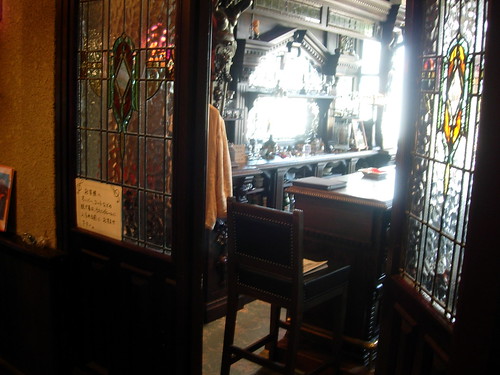
My first reaction was that the room itself is surprisingly comfortable and pleasantly studious. Most of the customers were men, which amazed me; over the course of a few hours I began to realize that most of them must be Kyodai faculty: what other group of middle-aged men in suits would sit in a classical music coffee shop for two hours on a weekday afternoon reading a book? And there aren’t a lot of women, I presume because (a) they can’t talk to each other, which is what women do at coffee shops here and probably everywhere, and (b) there aren’t almost any Kyodai faculty women, which is a disgrace. I will say that walking in and hearing a warm, vibrant recording of a Mozart piano concerto was no bad thing either.
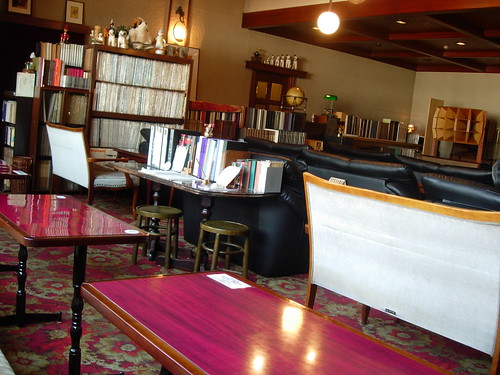
My next reaction was amused enjoyment of the service staff. They are all passably pretty young women, and they wear very soft shoes (to dampen noise), tidy white blouses with black v-neck sweaters, and pleated black skirts. They look, in fact, sort of like Japanese schoolgirls grown up and wearing a young woman’s version of the same uniform. They bring coffee and water, put it down silently, bob a curtsey, and disappear silently. Nice! (Another reason, I suspect, why the clientele is primarily male: this kind of service is not especially unusual in Japan, but when combined with monastic silence it feels slightly servile in a way that is not unpleasant for a middle-aged man like me, pleasant probably for many of them, and may perhaps feel odd for younger men and for women in general. Just a guess.) The fact that they are all young and fairly pretty makes me a little suspicious that the management are deliberately aiming at their audience, but I’m not really going to argue about it: they're not ogled or harassed or anything.
My third reaction was confusion. I decided, you see, that I should take a look at the big catalogue, because I figured this was probably a pretty good place to hear Tōru Takemitsu’s music. Takemitsu (武満 徹) was the dean of Japanese composers working in a more or less “classical” idiom. So I flip through, and there he is: one work, the Requiem for String Orchestra of 1957. Eh? This predates all his really major compositions, his leap to fame and importance in the international music scene, and all that. And he was quite prolific, too! Nothing else? And how come this hand-written catalogue still lists his dates as 1930–, when he in fact died in 1996; does this mean that nobody has called for the work in more than ten years?
This led to my fourth reaction: a mild disillusionment that coincided perfectly with my reservations about a temple to music. With a sinking heart, I turned through the pages. Yes: not a single entry for Schoenberg, Berg, Webern. Only three entries for Stravinsky. The holdout late-Romantic tonalist Sibelius, yes, some, but almost none of the only slightly more radical Richard Strauss. Lots of Shostakovich, that overrated Stalinist reactionary composer. In other words, this isn’t a temple to music, but a temple to everything Theodor Adorno described in a famous essay called “On the Fetish-Character in Music and the Regression of Listening” (“Über den Fetischcharakter in der Musik und die Regression des Hörens,” 1938). All that might disturb the beautiful surfaces of the music is removed, and along with it any remaining possibility that this same beautiful music might actually challenge, disturb, shake the listeners.
Planning Pilgrimages
For all that, it’s a lovely place to sit and read Adorno on music. He would, I think, have thought this delightfully ironic, and after all he was never one to pass up the opportunity to listen to Beethoven and Mozart. I plan to spend a lot of time here, reading and listening, because despite its imperfections it is far and away the closest approach to my ideal that I have yet seen. (It also helps that if you plan to come often, you can buy a book of tickets for seat+coffee, reducing the price as much as 25% for that first cup.)
But next time I’m there for a few hours, I’m putting on Beethoven’s Grosse Fuge. That'll show 'em.


